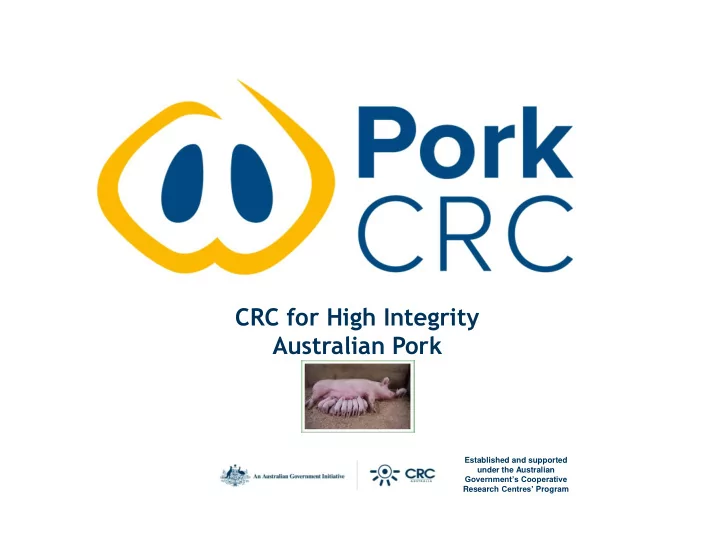

CRC for High Integrity Australian Pork Established and supported under the Australian Government’s Cooperative Research Centres’ Program
Canola Meal NIR Calibration Implementation Project JCS Solutions Pty Ltd – John Spragg • Joint project funded by Pork CRC and Australian Oilseed Federation • Final stage in developing and implementing NIR calibrations for canola meal
Background • Previous total & reactive lysine NIR calibrations required further improvement. • Required additional samples and more extreme heat damaged samples
Methodology • 53 canola meal samples from 11 crushing plants (7 expeller & 4 solvent) • Autoclaved samples: 0, 5, 10, 15, 20, 25 and 30 min at 135 °C
Methodology • Total and reactive lysine analysis • Wet chemistry analysis • NIR scanning and additional data included in NIR calibrations
Results Table: Total lysine, reactive lysine and reactive/total lysine content of canola meal (g/kg, as received), min and max values are not from the same samples Total Lysine Reactive Lysine Reactive/Total Lysine 85.0% Expeller Min 15.4 14.0 93.8% n = 30 Mean 17.9 16.8 102.5% Max 19.7 18.8 Std Dev 1.09 1.30 81.0% Solvent Min 16.1 14.0 87.6% N = 23 Mean 18.9 16.6 96.4% Max 20.9 19.9 Std Dev 1.14 1.36 Large variation in meal lysine content
Results Table: NIR calibration statistics for reactive lysine and total lysine in canola meal N Mean SD Min Max RSQ SECV 1-VR RPD Description Previous Stage 3 calibrations Total lysine (g/kg, as received) 126 19.425 1.633 15.821 24.440 0.901 0.764 0.780 2.14 Reactive lysine (g/kg, as received) 124 16.612 1.851 11.773 23.521 0.843 0.927 0.750 2.00 Revised Stage 4 calibrations Total lysine (g/kg, as received) 184 18.974 1.905 13.258 24.690 0.901 0.766 0.838 2.49 Reactive lysine (g/kg, as received) 183 16.454 2.001 10.447 22.480 0.863 0.934 0.782 2.15 Improved calibration statistics
Results Figure. Relationship between wet chemistry and NIR for reactive lysine content (as received) in canola meal Reactive Lysine 21.00 R² = 0.8706 19.00 17.00 NIR Prediction 15.00 13.00 11.00 9.00 7.00 7.00 9.00 11.00 13.00 15.00 17.00 19.00 21.00 Wet Chemistry
Outcomes • Increased the number of samples in NIR calibrations and the ability to predict meal quality. More robust NIR calibrations for prediction of total and • reactive lysine content. The variability between commercial crushing plant samples identifies the value in utilising NIR calibrations in providing rapid and lower cost meal quality assessment. Revised calibration equations suitable for commercial • release through AusScan for use by the oilseed, livestock and feed industries.
Recommend
More recommend